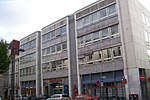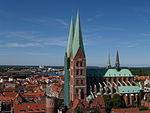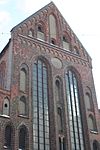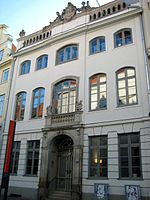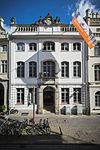Free City of Lübeck
AC with 0 elementsFormer states and territories of Mecklenburg-Western PomeraniaFormer states and territories of Schleswig-HolsteinFree imperial citiesHistory of Lübeck ... and 6 more
LübeckMembers of the Hanseatic LeagueStates of the German ConfederationStates of the German EmpireStates of the North German ConfederationStates of the Weimar Republic

The Free and Hanseatic City of Lübeck (German: Freie und Hansestadt Lübeck, Danish: Lybæk) was a city-state from 1226 to 1937, in what is now the German states of Schleswig-Holstein and Mecklenburg-Vorpommern.
Excerpt from the Wikipedia article Free City of Lübeck (License: CC BY-SA 3.0, Authors, Images).Free City of Lübeck
Fischergrube, Lübeck Innenstadt (Innenstadt)
Geographical coordinates (GPS) Address Nearby Places Show on map
Geographical coordinates (GPS)
| Latitude | Longitude |
|---|---|
| N 53.869722222222 ° | E 10.686388888889 ° |
Address
Stadttheater
Fischergrube
23552 Lübeck, Innenstadt (Innenstadt)
Schleswig-Holstein, Germany
Open on Google Maps



